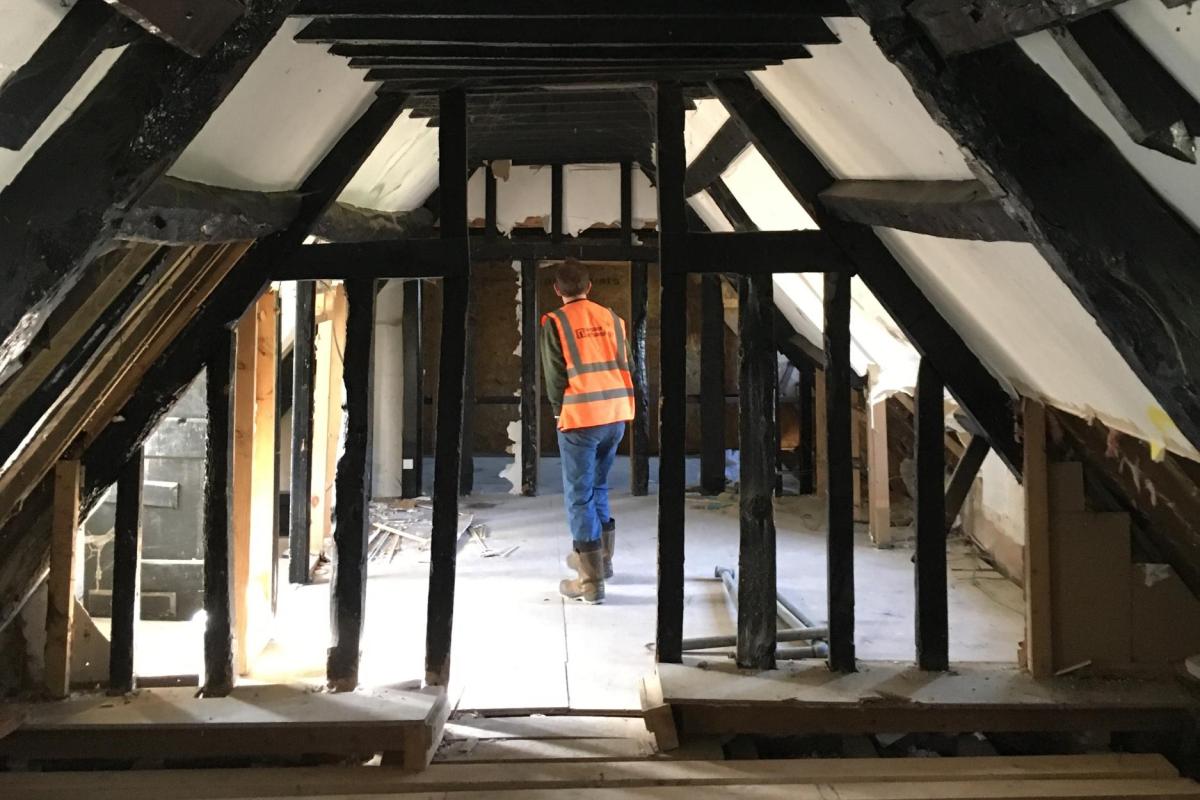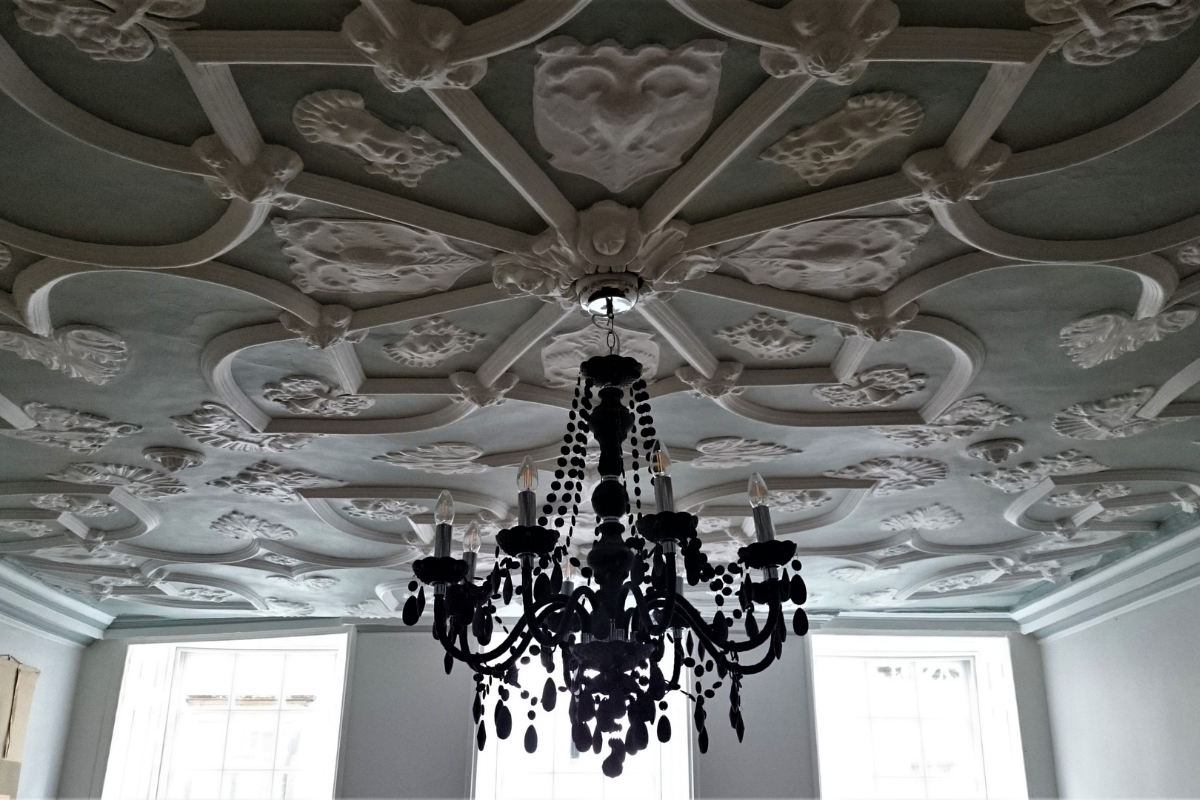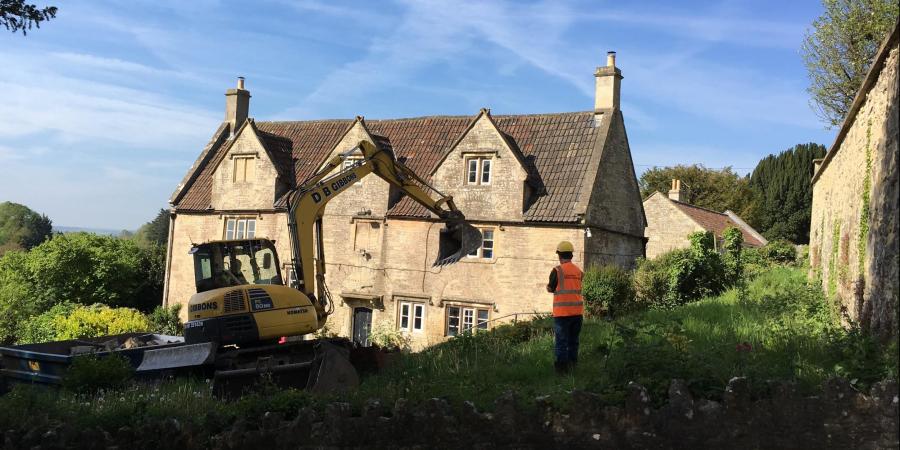As pub gardens are allowed to open in England today, we’re marking this exciting step in the government’s roadmap of reopening by revisiting some pubs and hospitality venues we’ve worked on! Many pubs, as well as playing a central part in community life, are also historic buildings, the subject of countless stories and packed with heritage.
Read on to find out more…
The Packhorse Inn, South Stoke, Bath
The Packhorse Inn was one of the Bath area’s oldest and much-loved pubs. As Project Manager Bruce Eaton described, “the 17th-century building, set in a large garden, is full of character: with flagstone floors, original timber beams and inglenook fireplaces. It was a refuge valued by locals and walkers alike. A cosy, friendly and quintessentially British pub!”

When the Packhorse was closed in 2012 after being sold by the brewery to a private developer, the local community leapt into action. After a successful campaign, they were able to buy back their village pub.
The Packhorse is situated in a historic landscape, with evidence of Romano-British occupation close by. In 2017, Wessex Archaeology undertook a watching brief on groundworks in the car park to ensure the recording of historic artefacts – a key step in refurbishment works.

The Packhorse was successfully reopened in 2018, four hundred years after its original opening - find out more on the website.
Read more about our work on The Packhorse Inn here.
A Tale of Two Ceilings: Bath Abbey and The Grapes pub
During Wessex Archaeology’s work on Bath Abbey for The Bath Abbey Footprint Project, we discovered hundreds of fragments of decorated Jacobean plaster-work from a magnificent ceiling which sheltered the nave and its aisles from the early 17th century to the 1860s.
Phase I Finds included large fragments of barrel-vaulted plaster rib-work, some still bearing tromp l’oeil paintwork, and many plaster flower rosettes.


In Phase II, excavations beneath the north aisle of the nave revealed more Jacobean plaster ceiling fragments, including smaller rib-work and decorative plaster work, including acanthus leaves, flowers, pointed and rounded bosses, fleurs-de-lys, and lion’s head masks.
When he heard of an intact Jacobean ceiling in an old pub in Bath, Fieldwork Archaeologist Chris Hambleton went to investigate. On the way to pick up the traditional Friday chip shop lunch, Chris spotted what looked like a Jacobean ceiling through the first floor window of The Grapes pub. Further exploration revealed a ceiling featuring rounded and pointed bosses, acanthus leaves and lion head masks – identical to the fragments from Bath Abbey.


The Grapes has been a feature of Bath’s Westgate Street as a pub since 1794. Behind the Georgian façade, architectural features indicate that the building itself is likely to date from the 16th century, when Bath’s spa experienced a rise in popularity and a fever of rebuilding took place in the city.
The rare and exciting discovery at The Grapes inspired Chris to research these two similar 17th-century ceilings, to uncover their history and try to find out if they could have been created by the same maker.
Read Fieldwork Archaeologist Chris Hambleton’s full blog series about the ceiling here!
The Red Lion Hotel, Salisbury
During our work reviewing the archaeology of Salisbury with Phil Harding during the Salisbury Sites series in 2020, we revisited the history of The Red Lion Hotel!

The building’s main range, around the central courtyard, dates from the early 14th century; details of the original timber framing can still be glimpsed behind the later 19th century façade. The building’s renovation over time is visible in the marks hewn into the timber framework.


Wessex Archaeology was involved in excavations at the Red Lion Hotel in 1999 following the submission of plans to extend the dining area. Finds included the base of a medieval ‘baluster’ jug, named for its resemblance to the shape of a staircase baluster which was later found in the same pit. This type of jug was produced at the medieval pottery kilns at Laverstoke from the mid-13th century. This particular example is likely to date from the 14th or 15th century and reflects the history of the Red Lion (formerly known as the White Bear) as an inn. The jug fragment can still be seen in a display case in the hotel bar!

Some of Salisbury’s other historic pubs and similar buildings also featured throughout the series:
The New Inn featured in our 16th installment: Old George Mall, New Street
Find out more about the Anchor Brewery in week 20: Anchor Brewery, Gigant Street



